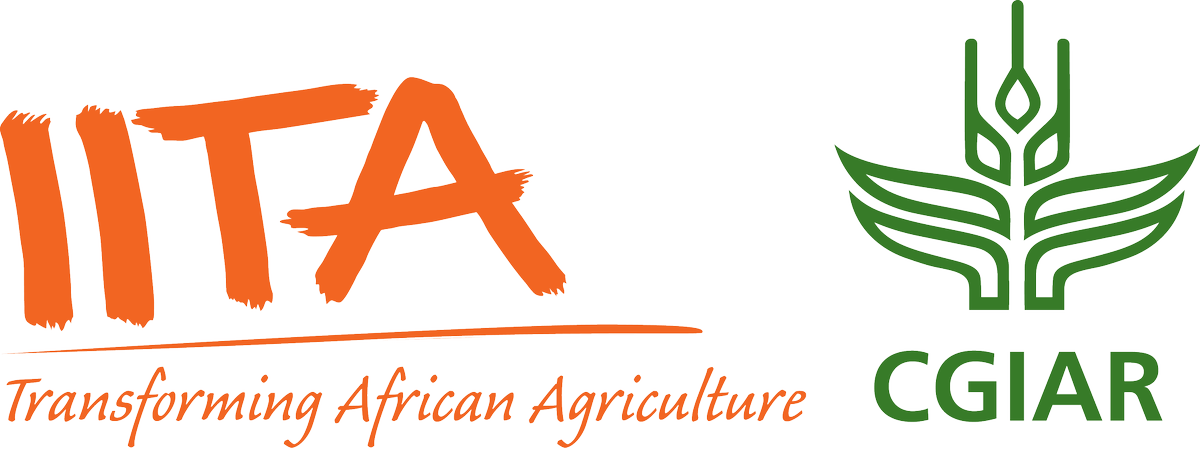Welcome to the International Institute of Tropical Agriculture Research Repository
What would you like to view today?
Genetic analysis and drought stress assessment of marker-based improved provitamin-A maize synthetics

Date
2023-07Author
Iseghohi, O.I.
Type
Review Status
Internal ReviewTarget Audience
Scientists
Metadata
Show full item recordAbstract/Description
Maize is an important staple in Sub-Saharan Africa (SSA) but most varieties are low in Provitamin-A (PVA) carotenoids, and the performance adversely affected by drought stress. Development and adoption of PVA carotenoids-enriched drought-tolerant Maize Synthetics (MS) could help improve maize yields and reduce vitamin A deficiency in SSA. Marker Assisted Recurrent Selection (MARS) could be used to improve the nutritional quality and resilience of maize. However, the effects of MARS on carotenoid contents of MS and performance of the PVA carotenoids-enriched MS in hybrid combinations and under drought stress have not been adequately documented. The level of improvement of carotenoid content of MS using MARS, combining ability and effects of drought stress on yield of PVA carotenoids-enriched MS were evaluated. Three selection cycles (C0, C1 and C2) of two MS (PVASYNHGA and PVASYNHGB) each improved through MARS were crossed to generate nine Varietal-cross Hybrids (VH). The genotypes [selection cycles, VH and a check (PVASYN13)] were evaluated at Ikenne, Mokwa, Saminaka and Zaria using a 4×4 lattice design with four replicates. The genotypes were also evaluated under Managed Drought Stress (MDS) at Ikenne following standard procedures. Days to Silking (DS), Plant Height (PH, cm) and Ear Aspect (EA) were measured and Grain Yield (GY, t/ha) was estimated. The α-carotene, β-cryptoxanthin and β-carotene contents (μg/g) of grains were determined using HPLC, and PVA content (μg/g) estimated. Data were analysed using descriptive statistics and ANOVA at α0.05. Genetic gain/cycle, Mid-parent Heterosis (MPH), Specific Combining Ability (SCA), General Combining Ability (GCA) and Drought Tolerance Index (DTI, where DTI of 0–0.49=low, 0.50–0.69=moderate and 0.70–1.0=high) were estimated. Genotype and location effects were significant for GY, DS, PH, EA and PVA carotenoids, while genotype×location effect was significant for DS, EA, β-carotene and PVA. The GY, DS, PH, EA, α-carotene, β-cryptoxanthin, β-carotene and PVA ranged from 3.7±0.3 (Ikenne) to 6.4±0.4 (Mokwa), 54.4±0.8 (Mokwa) to 63.0±0.8 (Zaria), 206.4±5.9 (Ikenne) to 222.5±8.0 (Saminaka), 2.4±0.2 (Saminaka) to 2.7±0.2 (Ikenne), 0.8±0.1 (Ikenne) to 1.0±0.1 (Mokwa), 2.4±0.3 (Ikenne) to 3.3±0.4 (Mokwa), 5.1±0.3 (Ikenne) to 6.5±0.8 (Mokwa) and 6.8±0.3 (Ikenne) to 8.7±0.8 (Mokwa), respectively. The MARS increased β-carotene and PVA by 25.0% and 15.0%, respectively in PVASYNHGA, and α-carotene by 5.0% in PVASYNHGB. Four VH (PVASYNHGBC0/PVASYNHGAC0, PVASYNHGBC2/PVASYNHGAC0, PVASYNHGBC0/PVASYNHGAC1 and PVASYNHGBC1/PVASYNHGAC2) had significant MPH and SCA for GY. Only PVASYNHGBC0/PVASYNHGAC0 (4.0%), PVASYNHGBC0/PVASYNHGAC2 (2.6%) and PVASYNHGBC0/PVASYNHGAC1 (2.3%) exhibited MPH for PVA. Three genotypes [PVASYNHGAC0 (0.7), PVASYNHGAC1 (0.3) and PVASYNHGBC2 (0.1)] had significant GCA for GY, while PVASYNHGAC2 (1.09) and PVASYNHGBC0 (1.27) had significant GCA for PVA. Under MDS, significant genotypic differences were observed for GY and DTI. Drought stress reduced GY by 31.4% (PVASYNHGBC1/PVASYNHGAC2) to 69.8% (PVASYNHGBC1/PVASYNHGAC0). The four VH with MPH for GY out-yielded the check by 12.7% to 16.4% and exhibited moderate to high DTI. Marker-assisted recurrent selection improved carotenoid contents of PVASYNHGA than PVASYNHGB. Genotypes PVASYNHGAC2 and PVASYNHGBC0 are suitable for provitamin-A inbred line development. Drought stress reduced grain yield of the maize synthetics but four varietal-cross hybrids (PVASYNHGBC0/PVASYNHGAC0, PVASYNHGBC2/PVASYNHGAC0, PVASYNHGBC0/PVASYNHGAC1 and PVASYNHGBC1/PVASYNHGAC2) were drought tolerant.
